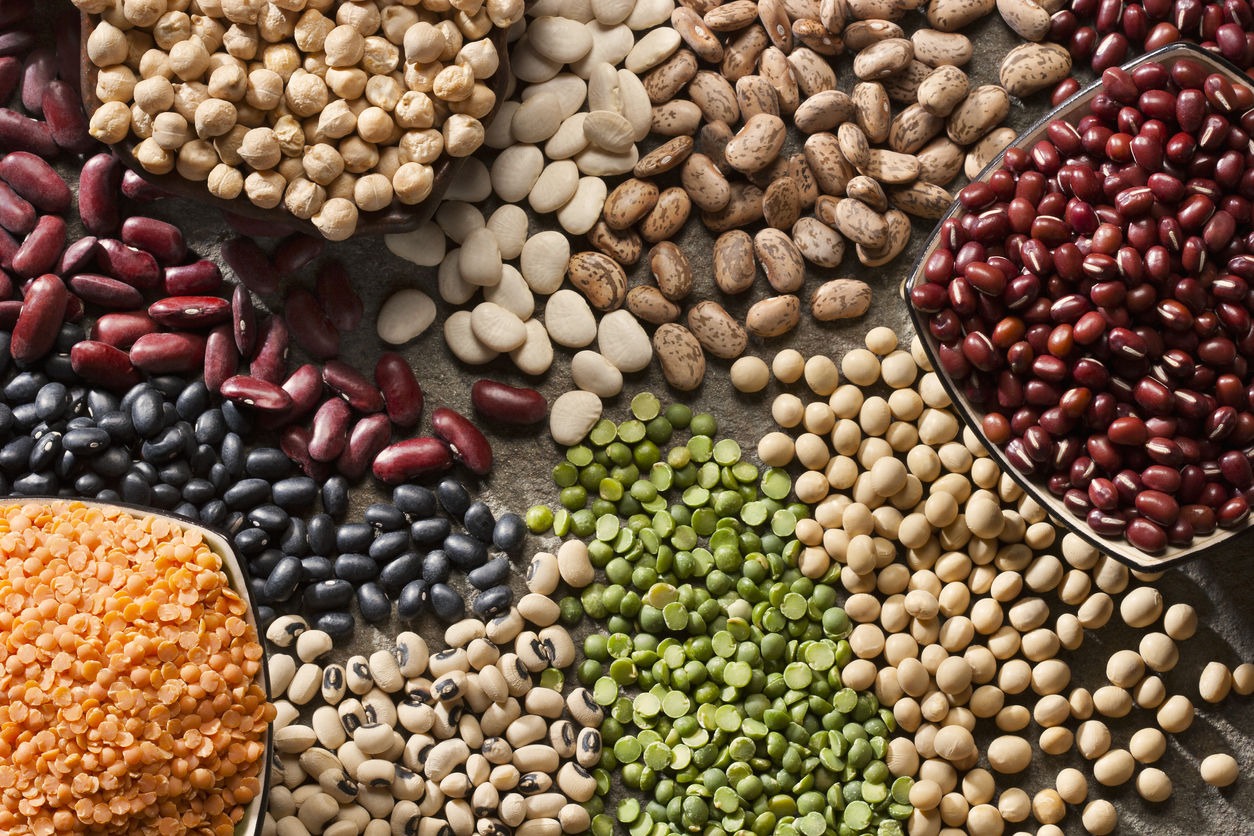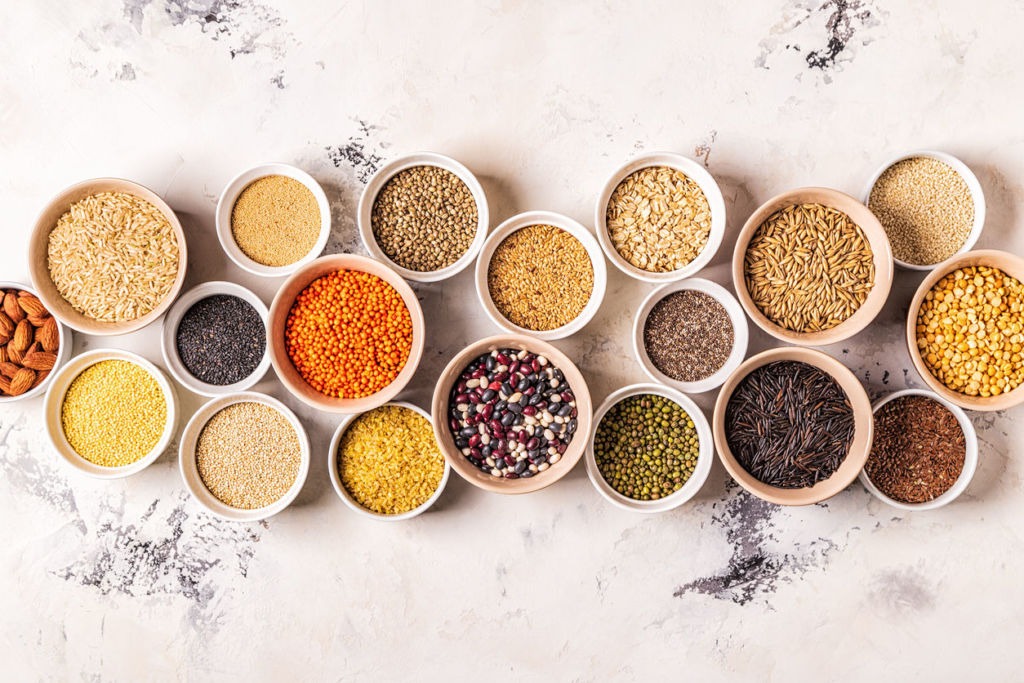Not everyone knows it, but beans are technically seeds. Most beans create flowering plants of the Fabaceae family, though we have been using them as food for so many thousands of years that we never really think about them in the same way we do as pumpkin or sunflower or flax seeds. To us, “beans” are their own category, and it’s probably better that way since there are thousands of varieties of them, all of which have different characteristics and various applications. Beans, as a food source for humans, date all the way back to ancient Egypt and Afghanistan. They could perhaps be older, as human civilizations existed long before records were ever kept.
These days, of course, it’s easy to go out and find and buy beans online, no matter which type you want. But that brings up a pretty good question: Which type of beans do you want? You could go with the sorts of varieties you already know. Nothing wrong with that big pot of beans just like grandma used to make! It’s hearty, nutritious, delicious food. Though, if you wanted to go another way, you can find a whole new world of beans, maybe even some unique ones that you haven’t heard about before, or at least may have always wanted to try but cannot regularly find them. Here are seven of the most unique types of beans around.
Cool Information on 7 Unique Bean Varieties
1: Adzuki Beans
One of the most unique beans that you’ll find living in the western world, adzuki beans, are small and sweet, and they’re trendy on the island of Japan but actually originated in China. One of the aspects of these beans that make them so unique is that they weren’t always used as a staple in any sort of eastern diet. Although they’re very tender and pretty sweet and an overall edible bean to dine on, the Chinese used them for medicine, believing they had many healing properties. Japanese culture also mirrored this tradition and took them home to use as medicine. Over the years, they’ve become more and more prominent in classic Asian cuisine, though they can be used in any sort of cuisine.
2: Ancient Ancestor Beans
If you’re a big fan of history, then you won’t be able to buy beans online at: https://grainworks.com/beans-peas-and-lentils/, with a cooler name than this. Ancient ancestor beans are actually formally known as Anasazi beans. They have been around for potentially many thousands of years, cultivated and enjoyed by the Native Americans in what is the modern-day “Four Corners,” an area that encompasses New Mexico, Arizona, Utah and Colorado. Pueblo Indians enjoyed these beans, and they are known for their antioxidant properties. People on diets today like them because they’re both low calorie and low carb beans, while still having a distinct sweetness about them.
3: Baby Lima Beans
A lot of people reading this likely think that there’s nothing at all unique about a lima bean. These hearty, tender, sweet beans are enjoyed all the time in kitchens everywhere, typically with butter and salt. Though the baby limas are undoubtedly unique. These beans aren’t just immature lima beans; they’re actually an entirely different dwarf variety, which makes them pretty unique in the bean world. High in folates and other essential vitamins and minerals, the name for lima beans comes from Lima, Peru, where they grew initially, and some may know the baby lima bean better for its colloquial name, the butter bean.
4: Black Turtle Beans
You could add this bean to the list simply because of its name. You can’t find a much more unique name for a bean than black turtle. However, they also make the list because they’re a very unique member of the kidney bean family. They’re also known in some circles as black beans but are not the same as the typical and common black bean. These beans have a very earthy, mushroom-like flavour. These beans originated in South America, where they’re still used today in a wide variety of Cuban and Brazilian dishes.
5: Cranberry Beans
While these beans might make some people think about turkey and stuffing and the American holiday, or perhaps just the fall season in general, there’s nothing tart or berry-like about cranberry beans. These unique beans get their name from their pink skin that closely resembles cranberries. While no one can be sure on the level of historical accuracy, these beans are thought to have been used for many hundreds of years, perhaps longer, in the region of the Andes mountains, where people believe they originated. They’re similar in flavour to pinto beans but are plumper and more tender.
6: Mung Beans
Mung beans are simultaneously both incredibly unique and insanely common. That might seem weird, but let us explain. As a full bean, the mung is unique in its Indian origins. It originated there and has been cultivated by Indians for thousands of years now. However, in places like America, the mung bean is famous without anyone even knowing they’re eating a mung bean. It’s the bean that’s known to people as the “beansprout,” purchased and consumed by fanatics of health food and micro-cuisine. They’re a slightly sweet bean when dried that has a tender texture and can be used in a range of applications.
7: Fava Beans
Hannibal Lecter fans know what this bean is, but that doesn’t mean they’ve eaten them. So, put the chianti down and stop making those funny tongue noises and just eat some more favas. Though if so many people know the bean exists, why is it so unique? The fava bean is unique in the bean world because it’s one of the oldest seeds out there. It dates all the way back to ancient Egypt, before becoming a staple in ancient Rome, and then a big hit in Italy, England, Scotland and other nations through the Middle Ages into modern times. It’s an earthy bean that’s almost bitter and must be cooked well, but also insanely nutritious.
Beans are delicious and undoubtedly nutritious, containing a laundry list of health benefits. You can find a ton of different cooking applications for any of the seeds on this list, and they can become a staple food for you and your family if you’re interested in living a healthier lifestyle. Plus, you never know, one of the most unique beans out there could become your new favourite food.
Why Beans Are Good for Your Health?
Lots of Fiber
Among the best sources of fiber are beans. This is significant given that the majority of Americans do not consume the 25 to 38 grams daily that are advised. You may prevent heart disease, high cholesterol, high blood pressure, and digestive disorders by eating enough fiber, which also keeps you regular. About 19 grams of fiber are included in one cup of navy beans. Make a hearty soup by adding smoked turkey, kale, onions, and carrots.
Plenty of Protein
Beans are an excellent source of low-fat, low-calorie protein that is already combined with fiber and carbohydrates. Around 15 grams are in a single cup. That is two to three times as much as wheat or rice. It’s particularly beneficial for lysine, a protein building ingredient that vegetarians may not get enough of. Lentils, onions, carrots, tomatoes, and chili powder are used to make a flavorful, protein-rich vegetarian stew.
Keeps You at a Healthy Weight
If you regularly consume beans, you’re more likely to be thinner around the middle and have a lower body mass index. (BMI). According to studies, obese men who ate a diet high in protein and mostly consisted of beans lost more weight. Consider substituting a hearty, low-fat, spicy kidney bean chili for beef as your main dish.
Boosts Your Heart Health
Making beans a regular component of your diet will benefit your heart. It can decrease your LDL “bad” cholesterol, according to studies. Try a straightforward beet, bean, and green salad for a heart-healthy eating alternative.
A Good Food for Diabetes Control
Eating a variety of beans not only seems to aid in preventing diabetes, but it also tends to aid in regulating high blood sugar, which is both a cause and symptom of the illness. For a tasty summer side dish, steam some fresh green beans with a little salt and olive oil.
Great Source of Iron
The blood proteins (hemoglobin and myoglobin) that assist in transporting oxygen throughout your body are made by your body using iron. Your hormones and connective tissue like tendons and ligaments depend on it as well. Soybeans contain around 9 milligrams per cup. Edamame, or soybean pods, can be prepared by boiling them in salted water. Straight from the pod, eat them warm.
Provides Magnesium
Magnesium stabilizes blood sugar and aids in the synthesis of protein and bone. A single cup of black beans has 120 milligrams, making them an especially good source. That is almost one-third of the daily amount advised. Try the tried-and-true dish of rice and black beans. For a tasty, healthful lunch, add some shredded chicken, lettuce, and salsa.
Chock-Full of Potassium
Your heart, kidneys, muscles, and nerves are just a few of the many organs in your body that depend on the substance. Lima beans in particular, which provide approximately 1,000 mg per cup, provide a lot of potassium. That is roughly double what you would receive from a banana.
Loaded With Zinc
It is necessary for your cells to produce DNA, fight against pathogens, and mend wounds. It promotes healthy infant development and improves taste and smell perception. Garbanzo beans, often known as chickpeas, have 2.4 milligrams per cup. You just need approximately a fourth of it for the entire day. Making it into hummus, a snack or meal in and of itself, is an option.
Scads of Folate
Due to its role in preventing some birth abnormalities, this B vitamin is particularly crucial for expectant or parenting women. Additionally advantageous to your neurological system, cell division, and heart health. One cup of pinto beans has around 300 micrograms, or roughly three-quarters of the daily required dose. It serves as the classic foundation for the mouthwatering refried beans seen in many Mexican cuisines.
Contains Resistant Starch
In that it’s more difficult to digest, resistant starch behaves like fiber. The “healthy” bacteria in your stomach feed on it as it travels to the big intestine. The presence of resistant starches increases satiety and controls blood sugar levels. If you allow your beans to cool and then refrigerate them, the resistant starch content will rise. As an easy summer side dish, consider a mixed bean salad.
Canned Beans Work, Too
If you don’t have enough time to soak and boil your beans, don’t panic. All you have to do is warm them up and you’re ready to go. Many of the same nutrients are present in canned beans, however homemade beans can contain a little bit more. Just be careful not to consume too much salt, as some products do. After you open them, you can rinse part of it off with water.
What About the Gas?
Beans do have one drawback. If you rapidly increase your intake of beans, you can have gas. Even while it’s typically not harmful, it can still be uncomfortable. After the first week, as your body adjusts, you should have less gas. Getting lots of water might be beneficial. As well as over-the-counter medications like Beano. Another factor is preparation. If you soak dry beans for an entire night and then discard the water, you’ll have less gas.



